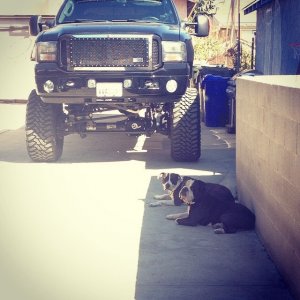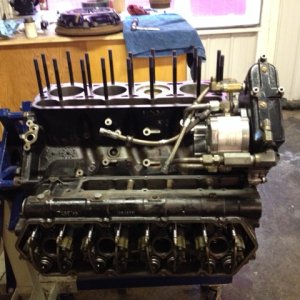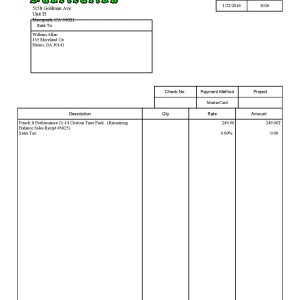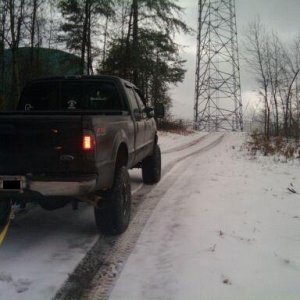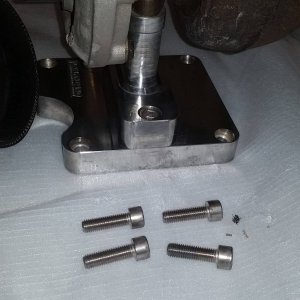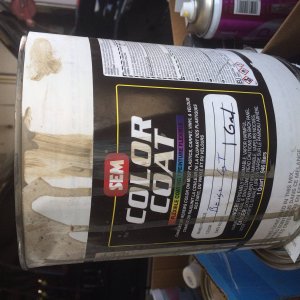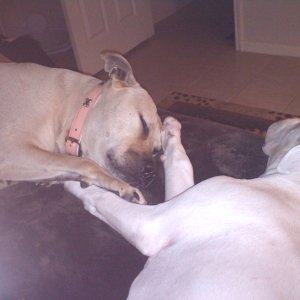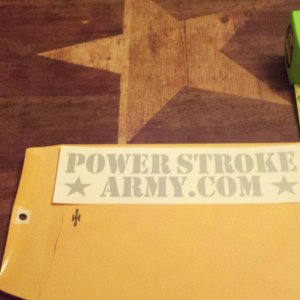Ok, I have read, researched, read and researched due to the hazing issue. I was set on this being an issue due to outside temperatures and timing but I could never pinpoint the issue.
I have an electrical diagnostic background in automotive 12v and industrial equipment 24v systems as well as extensive HVAC electrical diagnostics in AC and DC systems.
This is what I found.
My truck would do all of the previous issues everyone is discussing. I seriously felt it was electrical but couldn't find it. I had #2 fail a contribution test once but could never repeat it.
I had the original 15* hpop so I suspected this. Installed a HBjr hpop but didn't have the $ to do the ipr and it didn't test bad with AE. Obviously I thought it was the IPR. I bought both the ipr and ips but hadn't installed them simply because Ive never been a "parts changer".
Before changing these I started testing the harnesses. Researching most state that they had 3.2-3.5 ohms resistance at the engine harness connector. I tested the harness cold and got the same, good right? Well I started the truck and of course it ran fairly smooth but smoked like a basterd. Shut it down and disconnected the main engine harness above the vc. All seemed to test ok but #4 now read 8.5.
Well that was enough for me. Pulled the vc to replace the harness. Tested all the injectors on that bank and they read 3.0, this told me I had found the issue. Reinstalled everything. I now read 3.0-3.2 on all the injectors thru the harness. didn't really pay attention to which read 3.2. Restarted and it ran better, idling much better. It was cold(oil temp 34*)but the smoking seemed better. Holding it at 1800 to listen once it got above 80* and I could here a cyl cutout and a slight drop on the tach, then it would go away, very quickly.
I shut the truck down and retested at the engine harness connector. The left bank all read 3.0, the same as testing at the injectors. The right bank read 6.5 on all 4. Obviously I thought this was the issue but grabbed my son to confirm I wasn't losing it. When i retested with him watching the meter I got 3.2 on all 4. Eh? Well, i changed that uvch as well. All injectors tested 3.0. New uvch and uvch connector(broke it, pos) and all 8 injectors at the engine harness connector tested 3.0, the same as at the injectors.
Started it up and it purred. Matter of fact I hadn't heard it run this smooth(other than sporadically from time to time) AND the smoking was just about gone, the engine COLD.
YAHOO!
The only other issue I had was a romp when revving then coming back down to idle or after driving then putting it in park. We installed the new IPR and IPS and this solved the "romp".
Anyway, I apologize for the length but know this is/has been an issue for many so I wanted to be detailed.
IMHO, I have found thru the years that any resistance found other than that found at the component,(injector or harness in this case), is an issue. You will be told or hear that 0.2ohms is acceptable in a harness. With over 30yrs experience, I call bull...t. I once found 0.3ohms resistance on a sensor in a CAT 777. I was a kid and the experienced mechanics told me so with one of the jackasses showing me that the manual stated anything under 0.5 meant it was ok and it was just the resistance in the harness. I know everyone has read this in diagnostic manuals.
Well, think about it from a computer stand point. The computer sends out a voltage reference signal(5vlts) to a sensor. Based on the signal return the computer accepts the information and programs accordingly. So if resistance is present in the harness this is added to the sensor's resistance that changes based on it's input. Worse yet that very slight resistance that should be negligible may change once current is passed thru it or vibration causes it to change.
Apply this to my long winded story and that slight resistance actually causes a delay in the ms pulse width.
Believe me I researched for a long time. People changing tunes, tuners, o-rings, injectors, gpr's, gp's, IAH being removed, etc but nothing explained why some don't smoke but others do.
I now can contact Gearhead to retune my chip for the HBjr and discuss Hi-Altitude as air density makes a huge difference. I learned a long time ago that when it comes to tuning automotive applications as well as HVAC cfm calculations that using the 4% rule as a base has always given the best performance. Basically from 0-2000ft the tuning is the same as sea level however once above 2000ft a 4% "derate on air density" needs to be applied. What I have found is that a 1* advance(gas motor) for every 1000' over 2000' has always been a good starting point. (Have tuned alot with HP Tuners)
Yes, computers compensate for base timing using MAP and Baro sensors however think about this. If the computer has to compensate off of base for altitude, doesn't it lose this advance on the high end? Think vacuum advance/mechanical on points or a hall effect switch.
Example: i have restored(minus paint) an '87 Jeep YJ for my wife with a carbureted 4.2l. Base timing is 10* w/7.5* vacuum advance and 3.5* mechanical(i believe that's correct). By advancing the base timing by 5* to 15*, I have compensated for my altitude giving it much better response, power and most importantly fuel economy. It got about 10.5mpg but by tuning for altitude my wife gets between 14.5 and 15 around town. Using the same principle for my G-8 on timing and injector pulse width, I advanced timing and actually shortened the inj pulse width and that car was crazy fast. I would mess with everything I could. Wife said it was like a "pissed off doberman" in sport mode. HVAC equipment set at sea level to obtain the rated 5.1amps would only pull about 3.9amps. Adjusting or changing the drive pulley would compensate to obtain the correct airflow which in HVAC systems especially vav systems, is critical.
Anyway this is my .02 from a very in depth diagnostic to find an issue that plages alot of people.
MOST IMPORTANTLY- Use a GOOD volt/ohm meter. It MUST have a 0-200 scale. The 0-2k scale is junk for in-depth detailed electrical diagnostics. I have Fieldpiece, Fluke, GreenLee and Goodman Industries Meters. The Goodman is old, was my father's(i'm 46) but is the most sensitive still.
Set it on the 0-200 scale and test the resistance in the leads, this is the base say o.1ohm. Test and when done check the leads again for the base lead resistance if it has changed figure out why, get new leads or meter. If a reading is off even 2 tenths from the reading taken at the component thru the harness or say from one injector to the next- this is the problem. Find the cause for the increased resistance and don't let anyone tell you that the resistance increase this minimal is normal in the harness. It isn't.
TEST COLD BEFORE RUNNING AND IMMEDIATELY AFTER IT IS SHUTDOWN.( if i had taken just a minute more I probably wouldn't have caught the right bank issue)
And by the way, the stupid kid that found the 0.3ohms increased resistance found a pin in one of the connectors(40-50pins) that just didn't seem right. I replaced it while those mechanics were taking a break(they wouldn't listen). Well, that Haul truck that cost the mine 300k a day to be down for those 4 days fired up. The mine maintenance superintendent came running out of his office yelling "who fixed it?". I was advanced from being a mechanics helper to electrical/hydraulic diagnostics apprentice then after proving I understood electrical/hydraulic dynamics for a month I was put in the light vehicle maintenance fleet to head up the electrical/driveability issues.
Very long winded but if it helps even one person, great.



